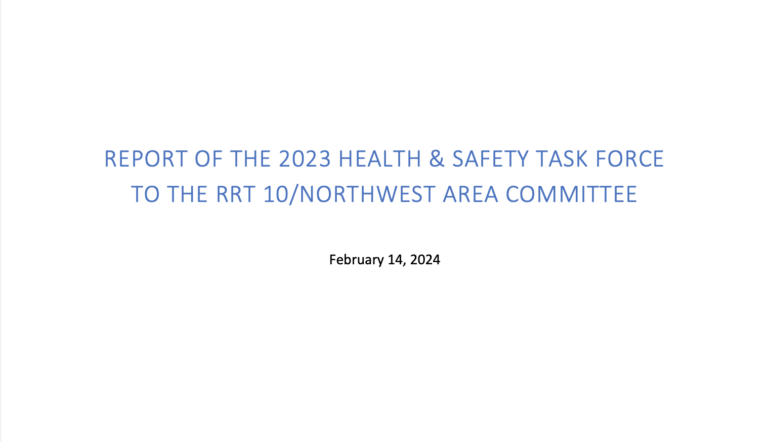Dispersants
Health & Safety Task Force Report Proposes Changes To Better Protect the Health of Workers and the Public During Oil Spills
A ground-breaking report identifies new programs and specific law changes to better protect worker health and public health during oil spills and chemical releases. The report is the initial work of the Health & Safety Task Force, co-chaired by ALERT and state officials from Washington and Oregon, that was chartered by the federal Regional Response…
Read MoreALERT Report Provides Nexus to Implement EPA Dispersant Use Regulations
Dr. Riki Ott’s report, “An Opportunity to Make it Right,” explains how EPA’s new rules for dispersant use during oil spill response (driven in part by ALERT’s lawsuit) provide an opportunity to institutionalize proactive state and local involvement in Area Committees to decide what dispersants to use, if any, during oil spill response. Ott recommends ways to get started,…
Read MoreFine Particulate Matter and Lung Function among Burning-Exposed Deepwater Horizon Oil Spill Workers (Chen et al., 2023)
Link to the Study Background: During the 2010 Deepwater Horizon (DWH) disaster, controlled burning was conducted to remove oil from the water. Workers near combustion sites were potentially exposed to increased fine particulate matter [with aerodynamic diameter ≤2.5μm (PM2.5)] levels. Exposure to PM2.5 has been linked to decreased lung function, but to our knowledge, no study has examined exposure…
Read MoreFine particulate matter and incident coronary heart disease events up to 10 years of follow-up among Deepwater Horizon oil spill workers
Link to Study Abstract Background: During the 2010 Deepwater Horizon (DWH) disaster, in-situ burning and flaring were conducted to remove oil from the water. Workers near combustion sites were potentially exposed to burning-related fine particulate matter (PM2.5). Exposure to PM2.5 has been linked to increased risk of coronary heart disease (CHD), but no study has examined…
Read MoreInhalation Exposure to Atmospheric Nanoparticles and Its Associated Impacts on Human Health: A Review.
Sunwani et al., 2021
Read MoreTranscriptome profiling of blood from common bottlenose dolphins (Tursiops truncatus) in the northern Gulf of Mexico to enhance health assessment capabilities
Link to full study here. Abstract Inhalation of PM2.5, particles with an aerodynamic diameter <2.5 μm, from sea spray after crude oil spills could present serious health concerns. The addition of dispersants to effectively spread the crude oil throughout the water column has been practiced in recent years. Here, we investigated the possibility of an…
Read MoreImpact of dispersant on crude oil content of airborne fine particulate matter emitted from seawater after an oil spill (PubMed)
Read the 5/20/2021 study PDF Read the 10/20/2021 study PDF Abstract “Inhalation of PM2.5, particles with an aerodynamic diameter <2.5 μm, from sea spray after crude oil spills could present serious health concerns. The addition of dispersants to effectively spread the crude oil throughout the water column has been practiced in recent years. Here,…
Read MoreImpact of dispersant on crude oil content of airborne fine particulate matter emitted from seawater after an oil spill
Link to Full Study Inhalation of PM2.5, particles with an aerodynamic diameter <2.5 μm, from sea spray after crude oil spills could present serious health concerns. The addition of dispersants to effectively spread the crude oil throughout the water column has been practiced in recent years. Here, we investigated the possibility of an increase in…
Read MoreA Review of Literature Related to Human Health and Oil Spill Dispersants (PWSRCAC)
A review of literature on dispersants from 2014–2018 by the Prince William Sound Regional Citizens’ Advisory Council (PWSRCAC) Anchorage, Alaska Read the full review here
Read MoreOil Spills and Dispersants Can Cause the Initiation of Potentially Harmful Dinoflagellate Blooms (“Red Tides”) (by ACS Publications)
“After oil spills and dispersant applications the formation of red tides or harmful algal blooms (HABs) has been observed, which can cause additional negative impacts in areas affected by oil spills. However, the link between oil spills and HABs is still unknown. Here, we present experimental evidence that demonstrates a connection between oil spills and…
Read More

